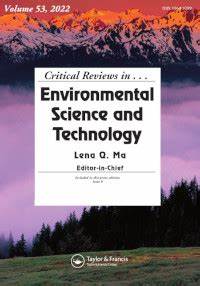Application of ion imprinted polymers (IIPs) for rare earth elements recovery from secondary aqueous sources—A data-based review
IF 13.2
1区 环境科学与生态学
Q1 ENVIRONMENTAL SCIENCES
Critical Reviews in Environmental Science and Technology
Pub Date : 2025-10-18
DOI:10.1080/10643389.2025.2553281
引用次数: 0
Abstract
Rare earth elements (REE) are of significant importance due to their irreplaceable roles played in various industries and military applications. The current REE supply mainly comes from primary ore-deposits and is under control by very few countries, leading to a significant risk of supply-chain disruption. To minimize such risk, there is an increased interest in extracting REEs from secondary sources, such as Acid Mine Drainage (AMD) and natural Acid Rock Drainage (ARD). However, compared to the primary sources, the dramatically lower concentration of REEs and higher levels of competing species (e.g., H+, Fe3+, Ca2+, Mg2+, Al3+) makes REE extraction extremely challenging. One approach to overcome this challenge is to use highly selective adsorbents, such as ion imprinted polymers (IIPs) that have been increasingly explored in recent years. Our main objectives of this data-based review are to: (1) clarify the application scenarios of two types of selectivity factors and evaluate the related methods via data analysis and modeling, (2) compare the performance of synthetic versus natural polymer-based IIPs through statistical analysis, and (3) provide perspectives for IIP development and testing to facilitate future advances.离子印迹聚合物(IIPs)在二次水源中稀土元素回收中的应用——基于数据的综述
稀土元素(REE)在各种工业和军事应用中发挥着不可替代的作用,具有重要意义。目前稀土供应主要来自原生矿床,受极少数国家控制,导致供应链中断的重大风险。为了最大限度地降低这种风险,人们越来越关注从二次源中提取稀土,例如酸性矿山排水(AMD)和天然酸性岩石排水(ARD)。然而,与主要来源相比,稀土元素的浓度显著降低,而竞争物种(如H+、Fe3+、Ca2+、Mg2+、Al3+)的含量较高,使得稀土元素的提取极具挑战性。克服这一挑战的一种方法是使用高选择性吸附剂,例如近年来越来越多地探索的离子印迹聚合物(IIPs)。本文的主要目的是:(1)通过数据分析和建模,阐明两类选择性因子的应用场景,并对相关方法进行评价;(2)通过统计分析,比较合成与天然聚合物基IIP的性能;(3)为IIP的开发和测试提供前景,以促进未来的进展。
本文章由计算机程序翻译,如有差异,请以英文原文为准。
求助全文
约1分钟内获得全文
求助全文
来源期刊
CiteScore
27.30
自引率
1.60%
发文量
64
审稿时长
2 months
期刊介绍:
Two of the most pressing global challenges of our era involve understanding and addressing the multitude of environmental problems we face. In order to tackle them effectively, it is essential to devise logical strategies and methods for their control. Critical Reviews in Environmental Science and Technology serves as a valuable international platform for the comprehensive assessment of current knowledge across a wide range of environmental science topics.
Environmental science is a field that encompasses the intricate and fluid interactions between various scientific disciplines. These include earth and agricultural sciences, chemistry, biology, medicine, and engineering. Furthermore, new disciplines such as environmental toxicology and risk assessment have emerged in response to the increasing complexity of environmental challenges.
The purpose of Critical Reviews in Environmental Science and Technology is to provide a space for critical analysis and evaluation of existing knowledge in environmental science. By doing so, it encourages the advancement of our understanding and the development of effective solutions. This journal plays a crucial role in fostering international cooperation and collaboration in addressing the pressing environmental issues of our time.

 求助内容:
求助内容: 应助结果提醒方式:
应助结果提醒方式:


